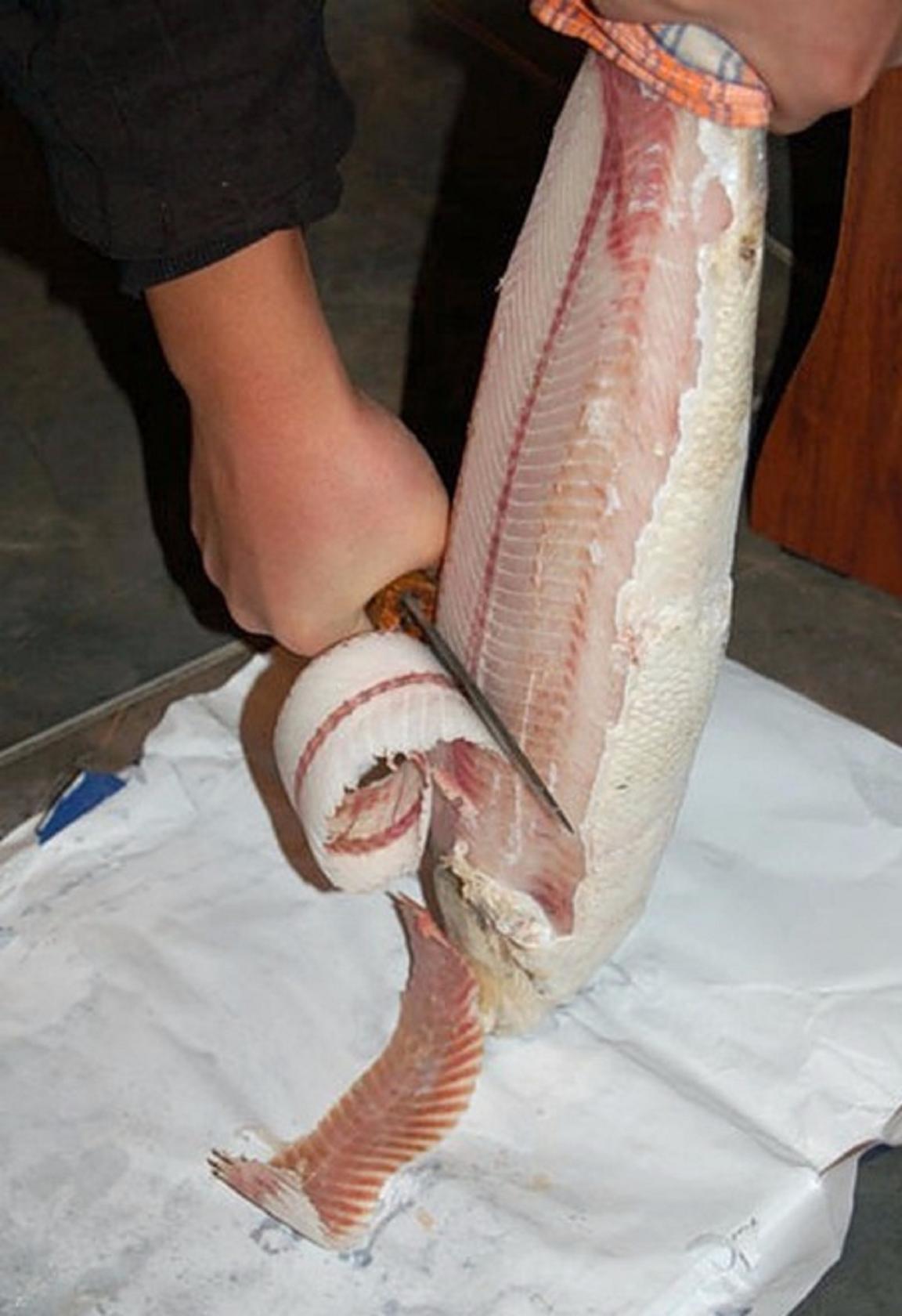Stroganina on:
[Wikipedia]
[Google]
[Amazon]
300px, Prepared ''stroganina'' on a table
 ''Stroganina'' () is a dish of the northern Russians and
''Stroganina'' () is a dish of the northern Russians and
 ''Stroganina'' () is a dish of the northern Russians and
''Stroganina'' () is a dish of the northern Russians and indigenous people
There is no generally accepted definition of Indigenous peoples, although in the 21st century the focus has been on self-identification, cultural difference from other groups in a state, a special relationship with their traditional territ ...
of northern Arctic
The Arctic (; . ) is the polar regions of Earth, polar region of Earth that surrounds the North Pole, lying within the Arctic Circle. The Arctic region, from the IERS Reference Meridian travelling east, consists of parts of northern Norway ( ...
Siberia
Siberia ( ; , ) is an extensive geographical region comprising all of North Asia, from the Ural Mountains in the west to the Pacific Ocean in the east. It has formed a part of the sovereign territory of Russia and its predecessor states ...
consisting of raw, thin, long-sliced frozen fish. Around Lake Baikal
Lake Baikal is a rift lake and the deepest lake in the world. It is situated in southern Siberia, Russia between the Federal subjects of Russia, federal subjects of Irkutsk Oblast, Irkutsk Oblasts of Russia, Oblast to the northwest and the Repu ...
, the dish is referred to as ''raskolotka''. Traditional ''stroganina'' is made with freshwater whitefish
The freshwater whitefish are fishes of the subfamily Coregoninae, which contains whitefishes (both freshwater and anadromous) and ciscoes, and is one of three subfamilies in the salmon family Salmonidae. Apart from the subfamily Coregoninae, ...
salmonids found in the Siberian Arctic waters such as nelma, muksun, chir, and omul
The omul, ''Coregonus migratorius'', also known as Baikal omul (), is a whitefish species of the salmon family endemic to Lake Baikal in Siberia, Russia. It is considered a delicacy and is the object of one of the largest commercial fisheries ...
. Rarely, it is made with sturgeon
Sturgeon (from Old English ultimately from Proto-Indo-European language, Proto-Indo-European *''str̥(Hx)yón''-) is the common name for the 27 species of fish belonging to the family Acipenseridae. The earliest sturgeon fossils date to the ...
. This dish is popular with native Siberians, and is present in Yakutian cuisine, Eskimo
''Eskimo'' () is a controversial Endonym and exonym, exonym that refers to two closely related Indigenous peoples: Inuit (including the Alaska Native Iñupiat, the Canadian Inuit, and the Greenlandic Inuit) and the Yupik peoples, Yupik (or Sibe ...
cuisine, Komi cuisine and Yamal cuisine. In Kaliningrad
Kaliningrad,. known as Königsberg; ; . until 1946, is the largest city and administrative centre of Kaliningrad Oblast, an Enclave and exclave, exclave of Russia between Lithuania and Poland ( west of the bulk of Russia), located on the Prego ...
it is made with Sarda. It is often paired with vodka.
Ingredients and preparation
Frozen fish is used for the preparation of ''stroganina''. The fish for ''stroganina'' is usually caught byice fishing
Ice fishing is the practice of catching fish with lines and fish hooks or spears through an opening in the ice on a frozen body of water. Ice fishers may fish in the open or in heated enclosures, some with bunks and amenities.
Shelters
L ...
during the late fall and fresh frozen in order to avoid the formation of ice crystals in the meat. Frozen fish can be glazed with near-freezing ice water in order to avoid dehydration and better-preserve the fish meat in a frozen state. The fish is typically frozen straight, without bending its body.
Before the preparation of stroganina, strips of skin are cut from the back and abdomen from tail to head. Vertical incisions are made in the flesh. The fish is placed head down on a hard surface and skinned. Thin slices of fish fillet cut along the body using a sharp knife. The geometry of the Yakutian knife is best suited to cut long slices that will form ribbon curls. In order to keep the slices frozen as long as possible, the ''stroganina'' is served immediately on non-metallic frozen plates or in ice-cold bowls with salt and black pepper powder. It is usually eaten with the hands while still frozen.
''Stroganina'', like caviar, is often consumed with vodka
Vodka ( ; is a clear distilled beverage, distilled alcoholic beverage. Its varieties originated in Poland and Russia. Vodka is composed mainly of water and ethanol but sometimes with traces of impurities and flavourings. Traditionally, it is ...
.
Variations
A variation of the dish is ''molochnaya stroganina'', which is prepared using ''stroganina'' and frozen fresh milk. The name is also applied to ''stroganina'' fromreindeer
The reindeer or caribou (''Rangifer tarandus'') is a species of deer with circumpolar distribution, native to Arctic, subarctic, tundra, taiga, boreal, and mountainous regions of Northern Europe, Siberia, and North America. It is the only re ...
meat.
In popular culture
The restaurant "Stroganina Bar" in Moscow, Russia, specializes in ''stroganina''. The city ofYakutsk
Yakutsk ( ) is the capital and largest city of Sakha, Russia, located about south of the Arctic Circle. Fueled by the mining industry, Yakutsk has become one of Russia's most rapidly growing regional cities, with a population of 355,443 at the ...
holds festivals celebrating the local delicacy.
See also
* List of raw fish dishes * List of Russian dishes * List of seafood dishes * Hoe (food) * Rui-be *Sashimi
is a Japanese cuisine, Japanese delicacy consisting of fresh raw fish or Raw meat, meat sliced into thin pieces and often eaten with soy sauce.
Origin
The word ''sashimi'' means 'pierced body', i.e., "wikt:刺身, 刺身" = ''sashimi'', whe ...
Notes
References
External links
* {{commons-inline Russian cuisine Seafood dishes Uncooked fish dishes Yakut cuisine Inuit cuisine Siberian cuisine